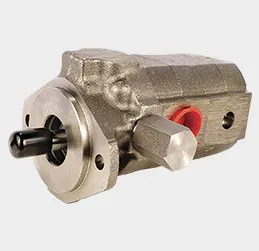green sand for metal casting
Green Sand for Metal Casting An Overview
Metal casting is a crucial process in manufacturing that allows the creation of complex shapes and components. Among the various molding materials available, green sand is a predominant choice due to its unique properties and cost-effectiveness. This article delves into the characteristics, benefits, applications, and the future of green sand in the metal casting industry.
What is Green Sand?
Green sand refers to a mixture of sand, clay, and water that is used to form molds for metal casting. The term green signifies that the sand is moist and has not been baked or hardened, which helps retain its shape during the casting process. Commonly, silica sand forms the basis of green sand, while clay serves as the binding agent. The most widely used clay in green sand is bentonite due to its excellent bonding abilities.
Composition and Properties
The typical composition of green sand is around 90-95% sand, 5-10% clay, and about 2-5% water. This combination gives green sand its desirable properties
1. Plasticity The moisture content allows the sand mixture to be molded easily, enabling the production of intricate designs. 2. Strength The clay increases the tensile strength of the mold, making it capable of holding its shape and withstanding the weight of molten metal. 3. Permeability Green sand allows gases generated during the casting process to escape, thereby reducing the risk of defects such as blowholes in the final product.
4. Reusability Used green sand can be recycled and reconditioned, which significantly lowers material costs and minimizes waste in foundries.
Benefits of Green Sand Casting
1. Cost-Effectiveness Green sand is one of the cheapest molding materials on the market. Its abundant availability and reusability make it an economically sustainable option for foundries.
2. Versatility It can accommodate a wide range of alloys and metals, making it suitable for various casting projects, from automotive parts to artistic sculptures.
green sand for metal casting

3. Ease of Use The molding and casting processes are relatively straightforward, making it a preferred choice for both small-scale and large-scale operations.
4. Surface Finish While green sand can produce acceptable surface finishes, it is particularly effective in creating intricate designs and complex shapes without extensive machining.
Applications in Industries
Green sand casting is widely used in various industries, including automotive, aerospace, machinery, and art. In the automotive sector, it is commonly used for producing engine blocks, pump housings, and other components due to its ability to create strong, durable parts. The aerospace industry also utilizes green sand for casting engine parts and structural components where precision and material integrity are critical.
Additionally, green sand finds applications in the production of sculptures and ornate fittings, giving artists the ability to produce detailed reproductions of their designs.
The Future of Green Sand in Metal Casting
As the casting industry continues to evolve, the sustainability aspect becomes increasingly important. The recycling of green sand not only reduces costs but also aligns with global trends towards more environmentally friendly manufacturing practices. Innovations in foundry technology are making the reconditioning of green sand more efficient, ensuring that it remains a viable option in the face of new materials and casting methods.
Research into improving the properties of green sand, such as enhancing its strength and thermal stability, is ongoing. Furthermore, advancements in automation are streamlining the casting process, making it faster and more accurate while maintaining the traditional benefits of green sand.
Conclusion
Green sand has established itself as a stalwart material in the metal casting industry, prized for its versatility, cost-effectiveness, and environmental benefits. As technology continues to advance and the demand for sustainable practices grows, green sand will likely maintain its position as a fundamental resource for metal casting for years to come. Its adaptability and ease of use will ensure that it remains a go-to choice for manufacturers looking to produce high-quality castings efficiently. In the dynamic world of metal casting, green sand remains a symbol of tradition meeting innovation.
-
Precision Sheet Metal Stamping Manufacturer | Fast & ReliableNewsAug.01,2025
-
OEM Sand Cast Pump Valve Fittings - Baoding Hairun Machinery And Equipment Trading Co., Ltd.NewsAug.01,2025
-
Custom OEM Impellers | High Efficiency & PrecisionNewsAug.01,2025
-
OEM Sand Cast Pump Valve Fittings - Baoding Hairun Machinery | Customization, Quality AssuranceNewsAug.01,2025
-
OEM Sand Cast Pump Valve Fittings - Baoding Hairun Machinery And Equipment Trading Co., Ltd.NewsAug.01,2025
-
OEM Sand Cast Pump Valve Fittings - Baoding Hairun Machinery And Equipment Trading Co., Ltd.NewsJul.31,2025















